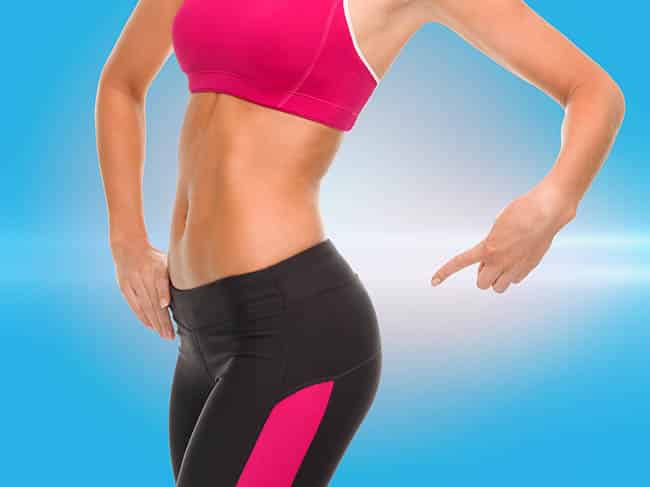
Ischiofemoral impingement syndrome
Ischiofemoral impingement syndrome refers to a clamping of soft tissue between the tuber ischiadicum (known as the sitting node) and the femur (femur). Ischiofemoral impingement syndrome occurs, in most cases, due to trauma or previous hip surgery. It is normally seen quadratus femoris that gets stuck.
It is very rare for this condition to occur without either injury or previous surgery - but in 2013, one case was reported in South Korea, of so-called non-iatrogenic (iatrogenic means damage caused by the therapist), non-traumatic ischiofemoral impingement syndrome.
VIDEO: 5 Exercises against Sciatica and Sciatica
Irritation of the sciatic nerve within the seat is also often a central role of the pain present in ischiofemoral impingement syndrome. If you have this diagnosis, it is very important that you exercise regularly to loosen up tight muscles, relieve pressure from the sciatic nerve and reduce local nerve irritation. Click below.
Join our family and subscribe to our YouTube channel for free exercise tips, exercise programs and health knowledge. Welcome!
VIDEO: 10 Strength Exercises against Sore Hips and Seat Pain
Because ischiofemoral impingement syndrome is a clamping syndrome, it is extremely important to strengthen the capacity of nearby muscles to reduce the pressure on the exposed area. By strengthening your hips with the following 10 exercises you can contribute to both pain relief and functional improvement.
Did you enjoy the videos? If you took advantage of them, we would really appreciate you subscribing to our YouTube channel and giving us a thumbs up on social media. It means a lot to us. Thank you very much!
- Diagnosis is made with MR imaging
At MRI, you can see a narrowing between the sitting knot and the femur. The diagnosis for the diagnosis is that the distance is 15mm or less. Due to the squeezing of the quadratus femoris, an elevated signal will also be seen in the area where this occurs.
This elevated signal will be seen as white in the MR image. As illustrated in the MR image below. You can read more about different types of imaging and how they work here .
MRI image of ischiofemoral impingement syndrome:
The arrow points to the elevated signal in the muscle quadratus femoris.
Treatment of ischiofemoral impingement syndrome
The condition is treated conservatively with physical treatment (muscle and joints), exercise, stretching, needle therapy and Shockwave Therapy - anti-inflammatory painkillers may also be needed in the acute phase of the problem. Otherwise, remember that a natural, healthy nutritional approach can be a useful supplement in the treatment of pain. Among the recommended exercises are general training of hip stabilizers, core muscles and gluteal stretching. Core training with therapy ball can be very beneficial.
What can I do even for muscle and joint pain?
1. General exercise, specific exercise, stretching and activity are recommended, but stay within the pain limit. Two walks a day of 20-40 minutes make good for the whole body and sore muscles.
2. Trigger point / massage balls we strongly recommend - they come in different sizes so you can hit well even on all parts of the body. There is no better self help than this! We recommend the following (click the image below) - which is a complete set of 5 trigger point / massage balls in different sizes:
3. Training: Specific training with training tricks of various opponents (such as this complete set of 6 knits of different resistance) can help you train strength and function. Knit training often involves more specific training, which in turn can lead to more effective injury prevention and pain reduction.
4. Pain Relief - Cooling: Biofreeze is a natural product that can relieve pain by cooling the area gently. Cooling is especially recommended when the pain is very severe. When they have calmed down then heat treatment is recommended - it is therefore advisable to have both cooling and heating available.
5. Pain Relief - Heating: Warming up tight muscles can increase blood circulation and reduce pain. We recommend the following reusable hot / cold gasket (click here to read more about it) - which can be used both for cooling (can be frozen) and for heating (can be heated in the microwave).
Recommended products for pain relief for muscle and joint pain
Biofreeze (Cold / cryotherapy)
Also read: - 5 Health gains from making the plank
Also read: - Pink Himalayan salt is incredibly much healthier than regular table salt!
Also read: Sore in the hip? Here you will find possible causes!
 Follow Vondt.net on YOUTUBE
Follow Vondt.net on YOUTUBE
(Follow and comment if you want us to make a video with specific exercises or elaborations for exactly YOUR issues)
 Follow Vondt.net on FACEBOOK
Follow Vondt.net on FACEBOOK
(We try to respond to all messages and questions within 24-48 hours. We can also help you interpret MRI responses and the like.)
Source:
Singer AD, Subhawong TK, Jose J et al. Ischiofemoral impingement syndrome: a meta-analysis. Skeletal Radiol. 2015; 44 (6): 831-7. doi: 10.1007 / s00256-015-2111-y - Pubmed citation









